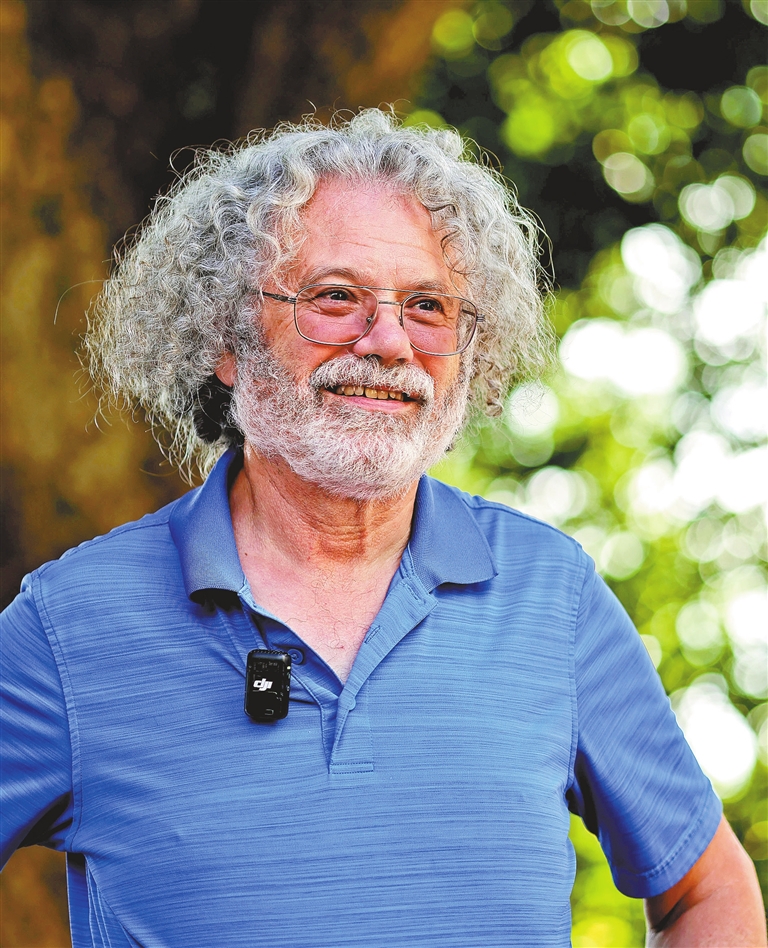

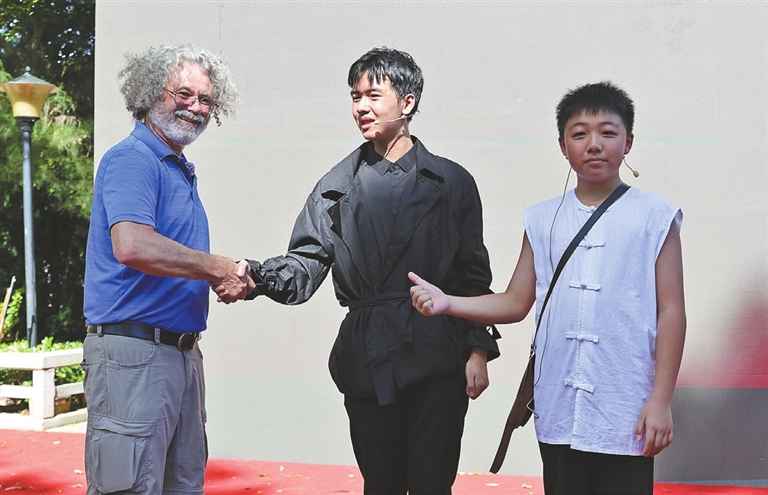
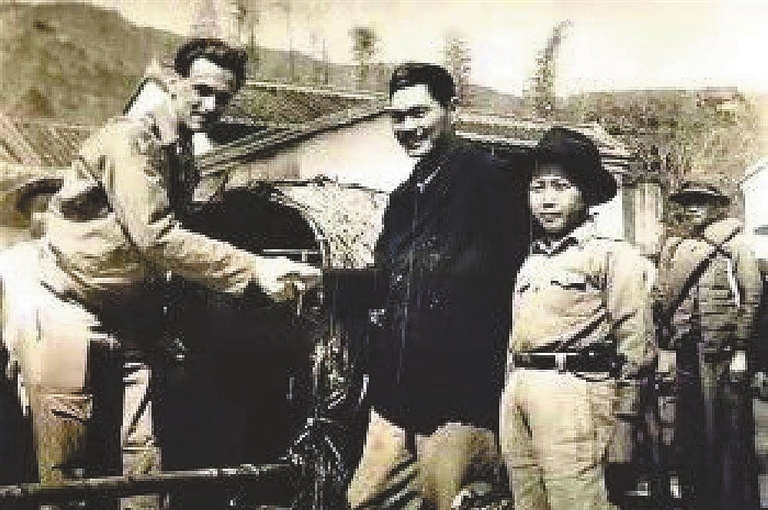
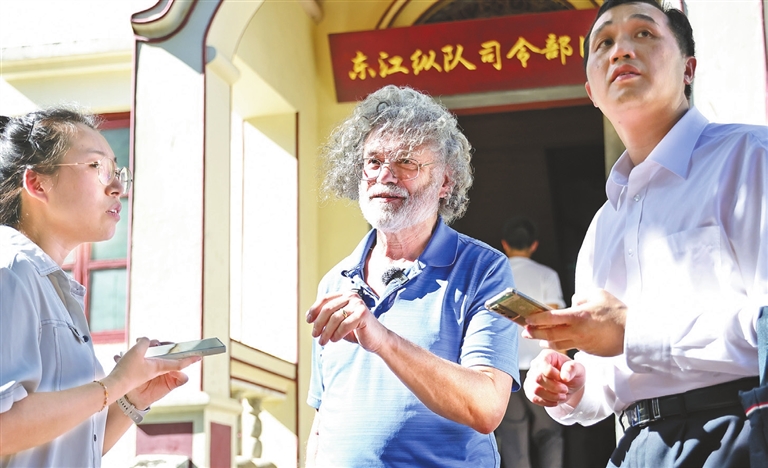
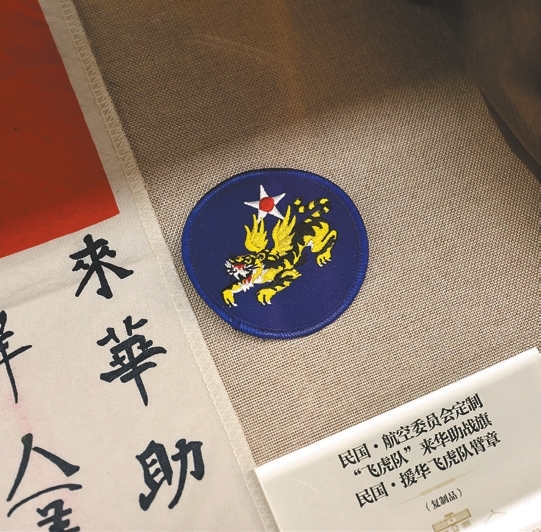
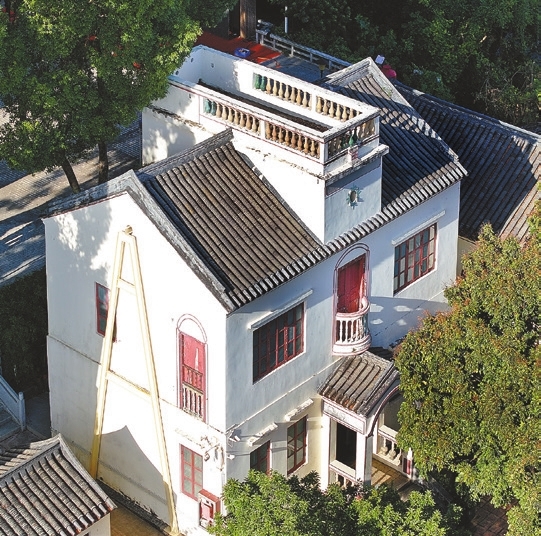

Chen Siqi vankochensq@163.com AT the old Dongjiang Column headquarters in Dapeng on Aug. 29, student performers brought 1944 to life in a tense, moving reenactment of Lt. Donald W. Kerr’s rescue — and in the audience sat the man who keeps that story breathing. David Kerr, the U.S. pilot’s son, watched as a new generation traced the footsteps that saved his father, the same chain of villagers, guerrillas, and a weathered banner that first led his family back to this place more than a decade ago. The scene — part theater, part homecoming — underscored an 81‑year bond between a rescued American airman’s family and the people of Shenzhen. David and his family first came to Shenzhen in 2008 on what he called a journey of gratitude, determined to fulfill his father’s lifelong wish to thank the Dongjiang Column (also known as the East River Column), which saved Lt. Kerr from a Japanese attack. Since then, David has returned regularly to renew old friendships, retrace his father’s escape route, and help keep the history alive. 27 days behind enemy lines On Feb. 11, 1944, then‑30‑year‑old Lt. Kerr, a U.S. pilot with the Sino‑American Composite Wing of the Fourteenth Air Force, also known as the Flying Tigers, took part in a mission to bomb the Japanese‑controlled Kai Tak airport in Hong Kong. When his aircraft was hit in fierce combat and caught fire, Lt. Kerr was forced to bail out in enemy territory. While parachuting, a gust of wind carried him into hills to the north of the heavily-guarded airport, where he was found by Li Shi, a 14‑year‑old liaison boy for the Dongjiang Column. Li and other guerrillas hid the wounded pilot in several places, including a mountain cave where he spent nearly two weeks under round‑the‑clock protection by five guerrillas. Over the course of 27 grueling days, he was moved through a chain of safe houses. Local villagers and Column fighters risked their lives nightly to supply him with food, clothing, and medicine. On March 9, 1944, he was taken by boat to Nan’ao and spent a few days in Tuyang Village, where the Dongjiang Column was headquartered. Before he returned to his base in Guangxi's Guilin, Commander Zeng Sheng presented him with a banner honoring him as an aerial hero — the banner that later helped David and his family locate his father's rescuers and build enduring ties. The rescue of Lt. Kerr was not an isolated incident. Data show that during the war, Chinese soldiers and civilians helped rescue hundreds of downed Allied airmen, and thousands of Chinese people lost their lives in these efforts. The Dongjiang Column’s rescue of Kerr is counted among at least 89 successful recoveries of foreigners carried out by the unit during World War II. Reconnection After the war, Kerr returned to the U.S. and later worked as a businessman in the construction industry. He rarely spoke of the brutality of war but never forgot the humanity and courage shown to him during those 27 days. Years later, his son made it his mission to find surviving veterans and their families and to share their stories with younger generations. David took great pains to locate the veterans and their families to fulfill his father’s wish: a journey of gratitude. “The banner brought me back here. I didn’t know where to start looking for the East River Column until I saw it,” David said. The banner reads “sent by the people of Huiyang Pingshan,” an area that later became Pingshan District in Shenzhen. “I went to Pingshan, found the memorial hall and some of my father’s cartoons. That connected me to the East River Column and allowed me to build all these friendships.” Since that 2008 journey, David has visited Shenzhen twice a year, except in 2020 when the pandemic made international travel nearly impossible. He has become friends with the family of Deng Bin, one of the guerrillas, and with the families of other veterans in Shenzhen. On each visit he meets Jiang Shan, the son of Li Siu‑wah, who played an important role in his father’s rescue. Promoting international friendship On this trip, in addition to retracing his father’s escape route and meeting old friends, David brought a newly republished simplified Chinese edition of his father’s memoir. Reflecting on past and present, David said he hopes the example of wartime cooperation can inspire future collaboration between China and the U.S. “What happened in 1944 and 1945 shows what we can do when we work together,” he said. “That cooperation helped lead to victory. I would hope that in the future, Chinese people and American people can not only be friends, but we can work together to solve common problems in the world.” David thinks his visits are more than a personal pilgrimage. With the newly republished Chinese edition of his father’s memoir and through meeting descendants of the guerrillas who hid Lt. Kerr, he hopes to turn gratitude into ongoing friendship and public memory. He said he cannot single‑handedly change global politics, but by keeping these ties alive he hopes to nudge more people toward cooperation and understanding. In that small, persistent way, an 81‑year promise has become a living bridge between generations — and between nations. | 
